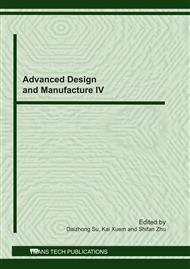p.193
p.197
p.201
p.205
p.209
p.213
p.217
p.221
p.225
Formal Verification of Embedded Systems Using the Alvis Approach
Abstract:
Embedded systems are usually characterized by time-critical reactions and increased complexity. Because it is usually impossible to correct a system bug by simply uploading of a new version of a system software or firmware, a system behavior should be verified in a formal manner. The Alvis approach presented in this paper is able to verify the system behavior, by specifying the border between a developed embedded system and its environment. The means to move the border is then proposed, which allows the designer to create a formal representation for selected parts of a model only.
Info:
Periodical:
Pages:
209-212
Citation:
Online since:
July 2011
Authors:
Keywords:
Price:
Сopyright:
© 2011 Trans Tech Publications Ltd. All Rights Reserved
Share:
Citation:


